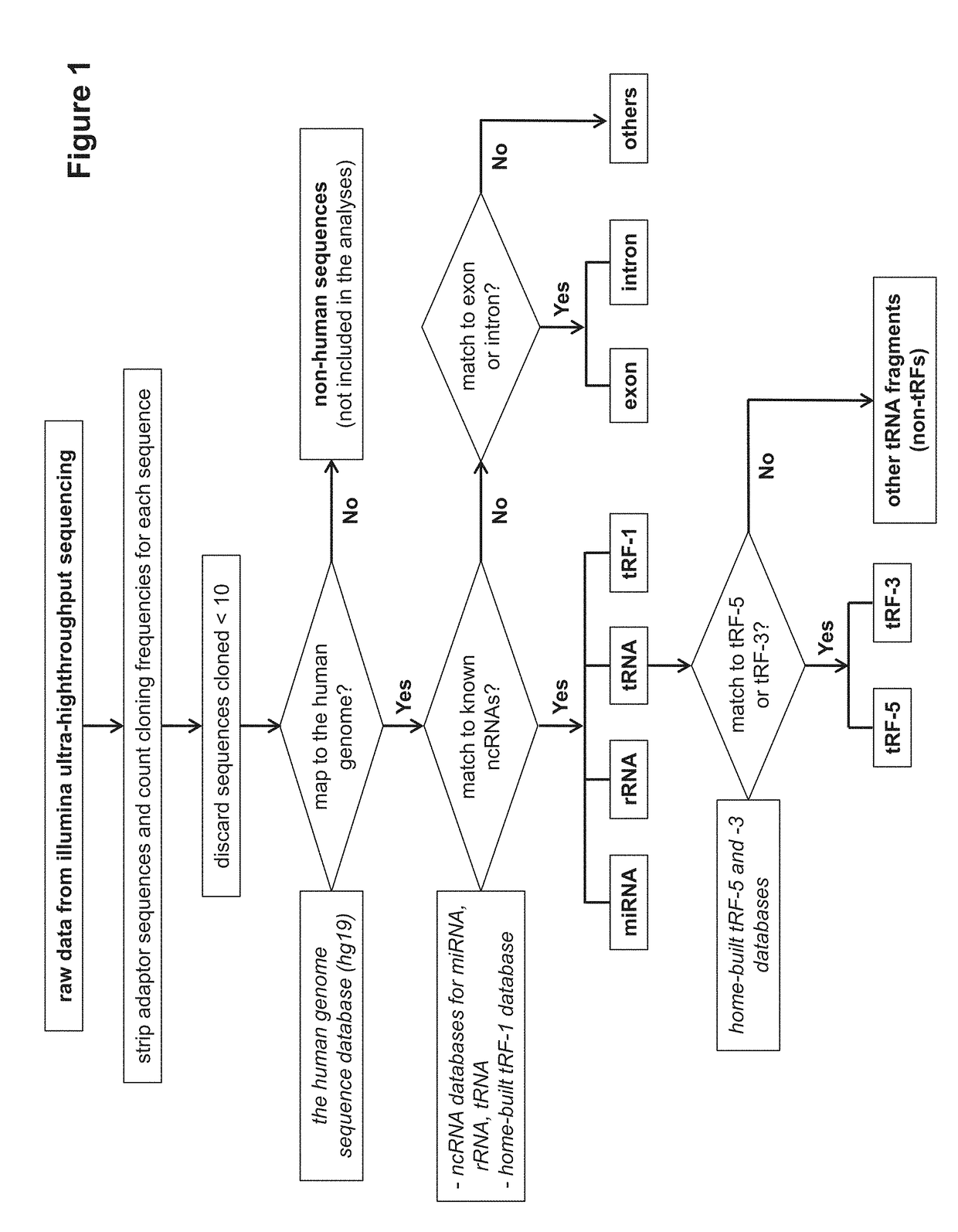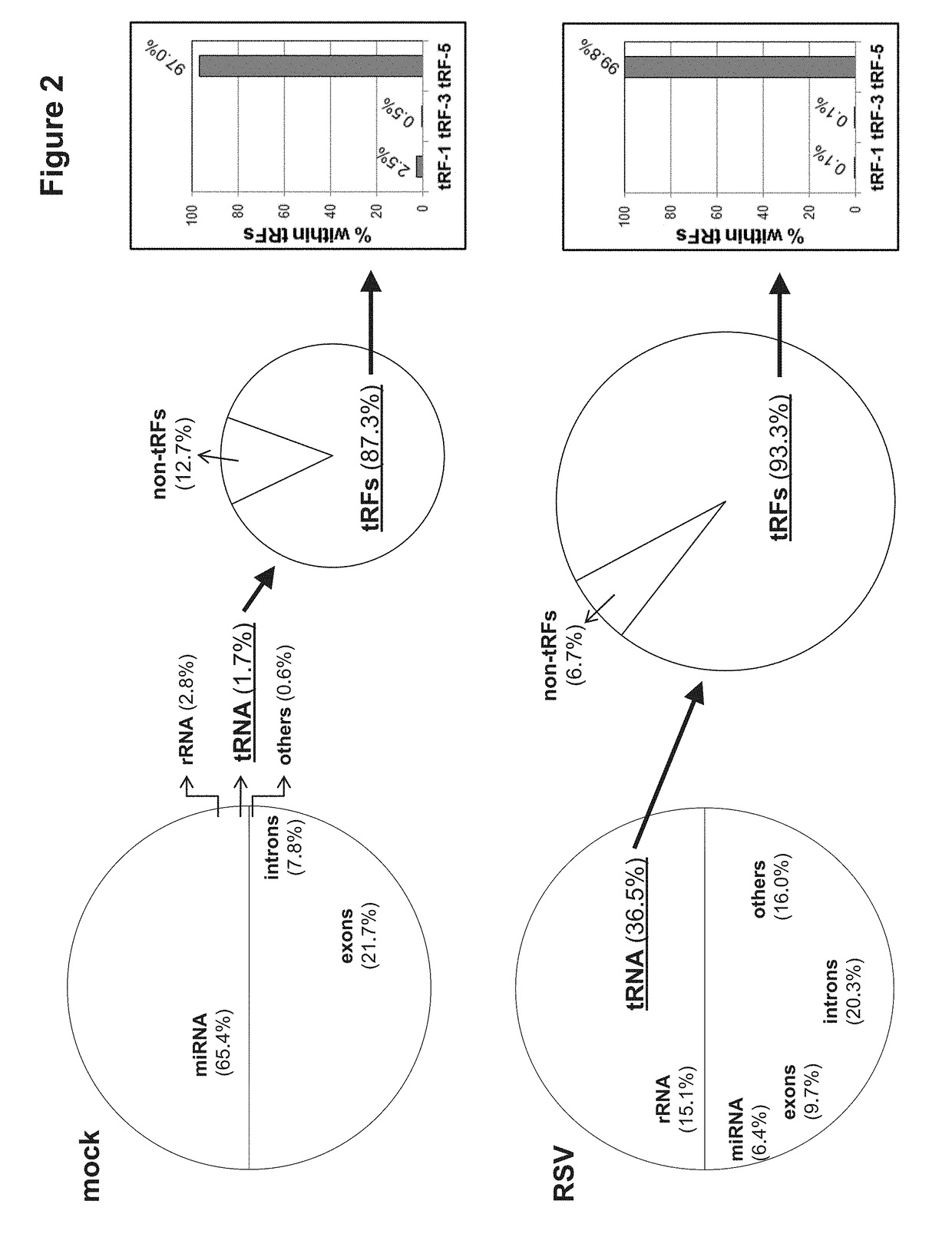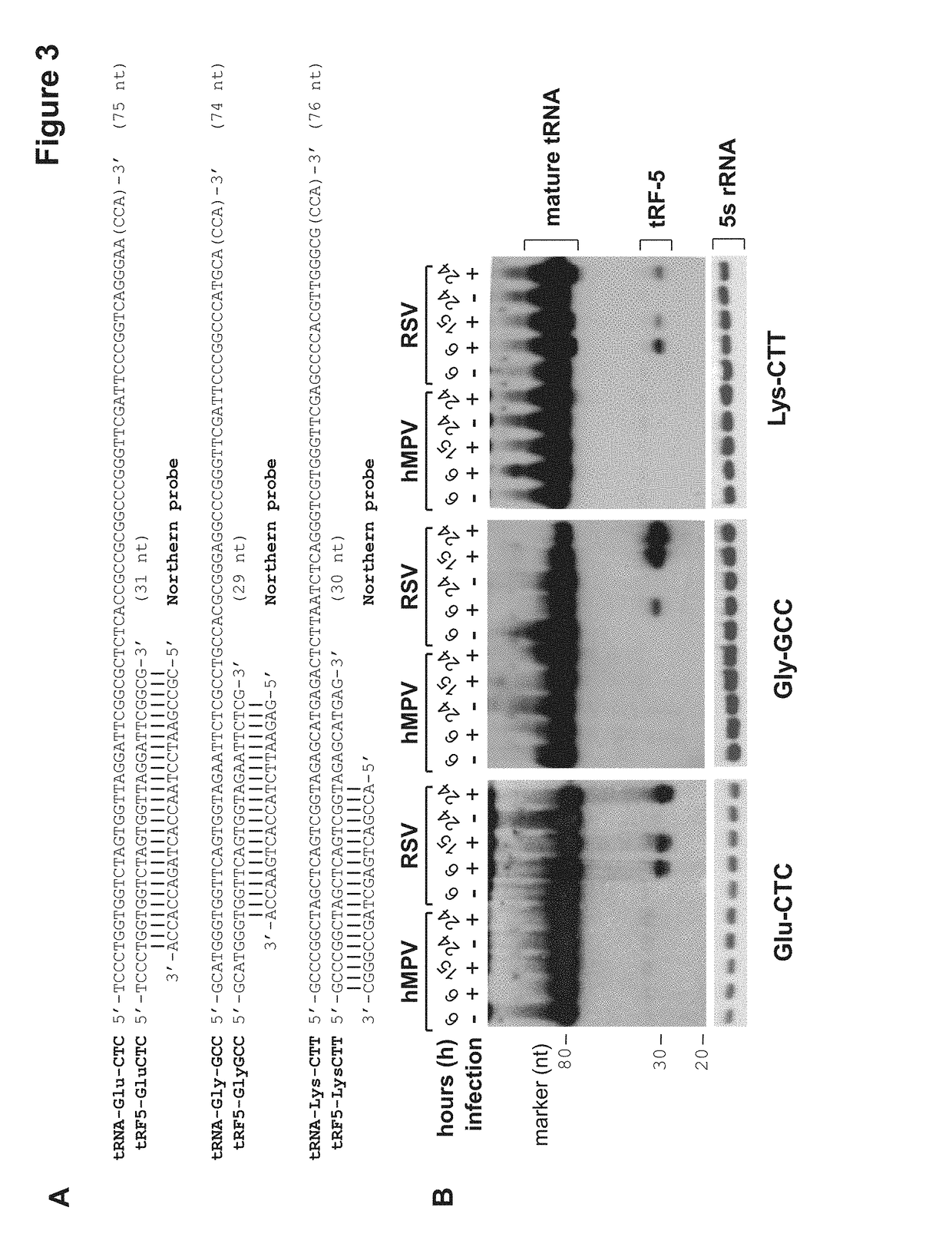Compounds and methods for altering RSV replication rate
a technology of rsv replication rate and compound, which is applied in the field of compound and method for altering rsv replication rate, can solve the problems of no specific treatment or vaccine for rsv infection, no specific treatment or vaccine, and morbidity and mortality ra
- Summary
- Abstract
- Description
- Claims
- Application Information
AI Technical Summary
Benefits of technology
Problems solved by technology
Method used
Image
Examples
example 1
[0117]The discovery of small non-coding RNAs (sncRNAs) with regulatory functions is a recent breakthrough in biology. Among sncRNAs, microRNA (miRNA), derived from host or virus, has emerged as elements with high importance in control of viral replication and host responses. However, the expression pattern and functional aspects of other types of sncRNAs, following viral infection, are unexplored. In order to define expression patterns of sncRNAs, as well as to discover novel regulatory sncRNAs in response to viral infection, we applied deep sequencing to cells infected with human respiratory syncytial virus (RSV), the most common cause of bronchiolitis and pneumonia in babies. RSV infection leads to abundant production of tRNA-derived RNA fragments (tRFs) that are ˜30 nucleotides (nts) and correspond to the 5′-half of mature tRNAs. At least one tRF, which is derived from tRNA-Glu-CTC, represses target mRNA in the cytoplasm and promotes RSV replication. This demonstrates that this t...
example 2
Use of t-RFs to Promote RSV Replication in Mice
[0162]The tRF tRF5-GluCTC promotes RSV replication in mice. Anti-tRF5-GluCTC (anti-GluCTC, see FIG. 4a) or control (CN) oligo (5 nmol / mice) was mixed with 5 μl TransIT-TKO transfection reagent (Mirus, Madison, Wis.) in 50 μl Opti-MEM (Invitrogen), followed by intranasal inoculation into BALB / c mice (n=3 / group). After 4 h, mice were mock-infected or infected with RSV at 107 pfu / mouse. RSV replication in the lungs was determined on day 2 p.i. (A). * denotes p<0.05, relative to anti-GluCTC-treated mice. (B) Lung RNAs were also extracted, followed by Northern Blot to detect tRF5-GluCTC. The results are shown in FIG. 15.
[0163]As shown in FIG. 15, RSV replication was significantly inhibited by the antisense treatment.
example 3
Respiratory Syncytial Virus Utilizes a tRNA 5′-End Fragment to Suppress the Host Antiviral Response Through a Novel Targeting Mechanism
[0164]Small non-coding RNAs (sncRNAs) are non-protein-coding RNAs of length≤200 nucleotides (nts). A major advance in understanding the significance sncRNAs was the discovery of microRNAs (miRNAs) and their functions in many diseases, followed by identification of other classes of sncRNAs. However, very little is known about the biological roles of newly discovered sncRNAs, including tRNA-derived RNA Fragments (tRFs). Our recent publication demonstrated that tRFs are abundantly induced by respiratory syncytial virus (RSV), the single most important cause of lower respiratory tract infection (LRTI) during infancy and early childhood, and a tRF called tRF5-GluCTC promotes RSV replication, with underlying mechanism(s) completely unknown. Here, we show that tRF5-GluCTC favors RSV replication via suppressing apolipoprotein E receptor 2 (ApoER2), an anti-R...
PUM
| Property | Measurement | Unit |
|---|---|---|
| temperature | aaaaa | aaaaa |
| size | aaaaa | aaaaa |
| time | aaaaa | aaaaa |
Abstract
Description
Claims
Application Information
 Login to View More
Login to View More - R&D
- Intellectual Property
- Life Sciences
- Materials
- Tech Scout
- Unparalleled Data Quality
- Higher Quality Content
- 60% Fewer Hallucinations
Browse by: Latest US Patents, China's latest patents, Technical Efficacy Thesaurus, Application Domain, Technology Topic, Popular Technical Reports.
© 2025 PatSnap. All rights reserved.Legal|Privacy policy|Modern Slavery Act Transparency Statement|Sitemap|About US| Contact US: help@patsnap.com



